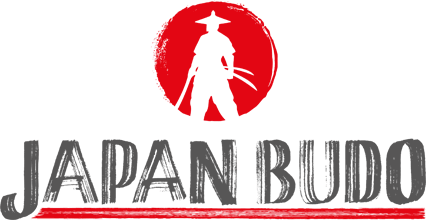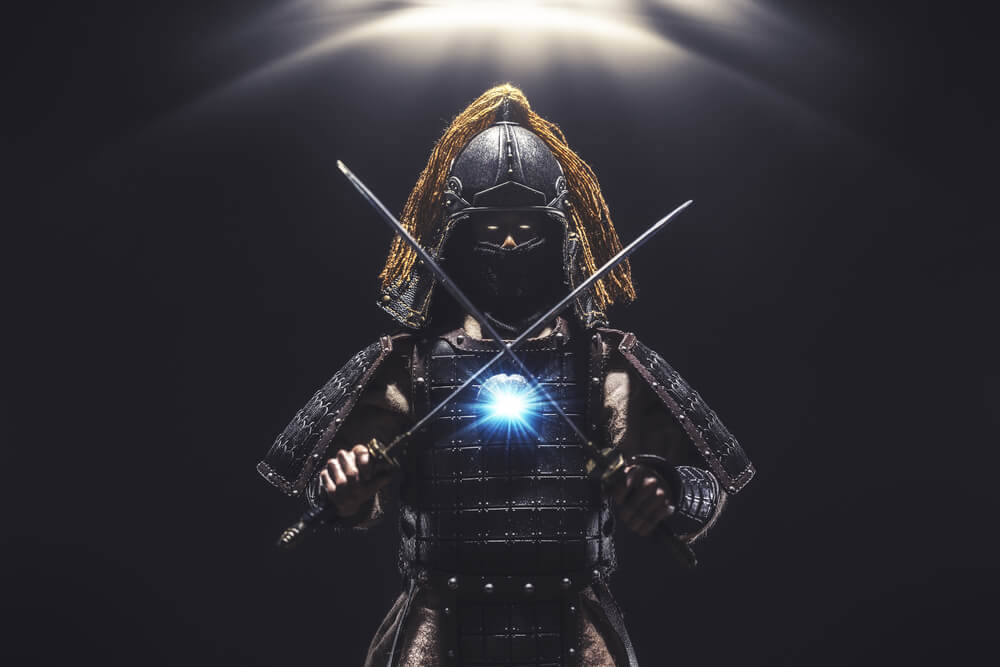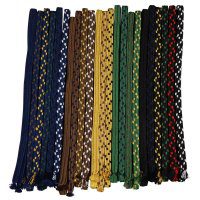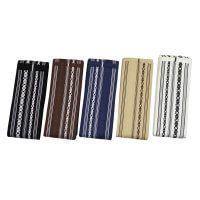Sengo Muramasa is one of the most famous swordsmiths in Japanese history. He has also been a figure in pop culture for centuries. He is considered the founder of the Muramasa school.
Unfortunately, the exact dates of his life are unknown. He is said to have been born in the Muromachi period (1337-1537), worked mainly as a swordsmith in the Sengoku Jidai (1477-1537) and lived in the Province of Ise. The oldest surviving blade, signed Muramasa including the date, dates from 1501.
He began his career as a blacksmith by making agricultural tools. Due to the high demand for swords in the Sengoku period, he later switched to making swords. He is said to have learnt swordsmithing as a student of Heianjo Nagayoshi. A well-known blacksmith with roots in the province of Yamashiro. One of the 5 famous Gokaden.
Muramasa was considered an ambitious and inquisitive swordsmith. He worked with numerous blacksmiths and seemed to absorb all knowledge about the art of swordsmithing.
What Muramasa blades are famous for
Muramasa blades were famous for their sharpness and were comparatively cheap in relation to their quality. This is why they were popular and widely used among the samurai of the time.
Part of the Japanese attitude towards swords is that the character of the blacksmith has an influence on the finished blades. In addition to his ambitious blacksmithing skills, Muramasa was regarded as an erratic person who was easily irritable and was sometimes even described as mad. However, it is not known how much of this is historically accurate and how much was added later because of the legend surrounding Muramasa.
In fact, there have been some curious incidents involving Muramasa blades that have made him and his swords a legend.
Incidents with Muramasa blades and the Tokugawa family
The blades seemed to be particularly keen on the members of the Tokugawa family.
Matsudaira Kiyoyasu (grandfather of Tokugawa Ieyasu)
Matsudaira Kiyoyasu, the grandfather of Tokugawa Ieyasu, was wounded with a Muramasa blade by one of his own followers. The latter was convinced that Kiyoyasu had killed his father, although there was no reason to do so. This incident sowed discord within the influential Matsudaira family, which was the cause of the dynasty's downfall.
Matsudaira Hirotada (father of Tokugawa Ieyasu)
Matsudaira Hirotada was killed by one of his closest confidants. The latter went into a rage without any prior events and murdered Hirotada with one of the cursed blades.
Tokugawa Ieyasu himself
He himself even had two unusual incidents with the blades:
- In the famous Battle of Sekigahara, one of his followers is said to have pierced the helmet of an enemy general with a spear (with a Muramasa blade) and the blade is said not to have been scratched. This was so incredible that Ieyasu wanted to inspect the yari himself. During the inspection, he cut himself on the blade.
- During the siege of Osaka Castle, the samurai Sanada Yukimura launched a surprise attack and came dangerously close to Ieyasu. I'm sure you can guess which blade the samurai used for this insane action.
Tokugawa Ieyasu's son Tokugawa Nobuyasu
Tokugawa Nobuyasu was suspected of collaborating with the Takeda clan. Because of this suspicion and other tactical considerations, Tokugawa Ieyasu ordered seppuku for his own son. This was carried out in 1579 and a Muramasa blade was used.
Other strange happenings too
In addition to the story about the Tokugawa family, there was another incident for which a Muramasa blade is said to be responsible.
In the famous red light district Yoshiwara in the city of Edo, it happened in 1696 that the wealthy businessman Sano Jirozaemon killed dozens of people with a Muramasa sword in a psychotic fit.
This story was picked up in Kabuki theatre and became famous. As a result, Muramasa became a figure in the pop culture of the time and his name is still used in manga and anime today.
Ban by Ieyasu
The suffering that the Tokugawa family had experienced at the hands of the cursed blades prompted Ieyasu to ban the blades among his followers in 1579.
The samurai in the service of the Tokugawa family were to destroy their Muramasa blades. Possession was threatened with the death penalty (by seppuku). Some friendly daimyo also followed this procedure. As the swords were popular, signatures were often removed or changed to similar-sounding names such as Masamune.
With the Tokugawa family's disfavour towards the blades, they became popular with the enemies of the Edo Shogunate. They hoped to gain an advantage in battle with the cursed blades. Owners of Muramasa blades were therefore able to sell them to rivals of the Tokugawa. Collaborating with the enemy, however, was also punishable by death for the followers of the Tokugawa family.
Fact and fiction
The blades were very sharp, popular and of good quality. However, none of the blacksmith's work has the status of a national treasure of Japan. This means that Muramasa is not really one of the best blacksmiths in Japan's history, as some blacksmiths have even created several blades that are categorised as national treasures.
According to legend, Muramasa's blades are thirsty for blood, which the incidents mentioned above are supposed to prove. However, the Tokugawa family's home region was close to the region where Muramasa worked and his blades were popular. It is therefore quite possible that it is a coincidence that the blades of only this blacksmith were used in the incidents.
Whether with the famous Whether a Muramasa blade was actually used in the Yoshiwara incident or whether it was just invented for the story cannot be verified in retrospect.
These are mainly legends about a blacksmith who did solid work and was famous for his sharp blades. Because of its interesting history, we offer in our online shop for Japanese swords a Iaito, which is modelled on the original sword by Sanada Yukimura mentioned above.





